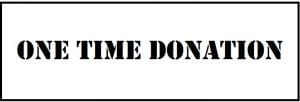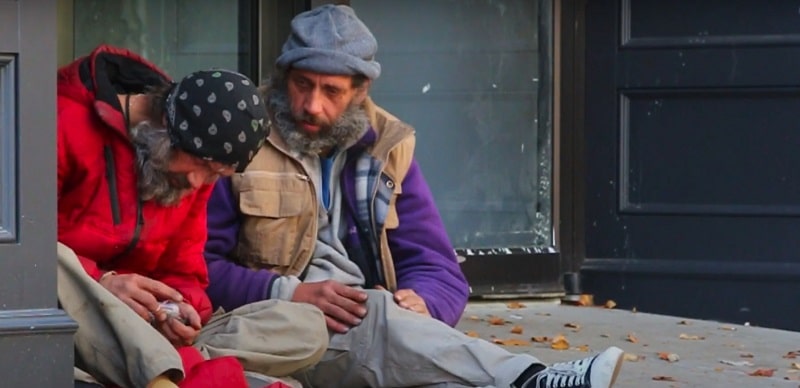
Downtown Salt Lake City: Main Street — Three homeless men sit in the former business entrance to the Off-Broadway Theater and distribute rations of spice or possibly weed. In broad daylight on the busy thoroughfare, they roll joints and watch the passers-by. Around the corner, acrid plumes of blue smoke fill the air. The SLCPD, like most metro Police departments, have essentially decriminalized the distribution and use of less than one ounce of marijuana.

Just a few feet away, “Downtown Ambassadors” are telling a homeless woman named DJ, from Brooklyn, that she can’t get a hotel voucher for the night because they have been put on hold by the city. The homeless resource centers are full, but there will likely be an “overflow center” coming soon.
Three other homeless men are milling about on Main Street. One man is deep in thought as he applies acrylic paint to his canvas propped up against the former TP Gallery. Another man is hauling around his possessions in a shopping cart; another is ranting to an invisible person. This small section where City Weekly, TP Gallery, Coffee Garden and Eborn Books were located has been empty for two years. Today, the businesses and the area are blighted and have become a homeless enclave.
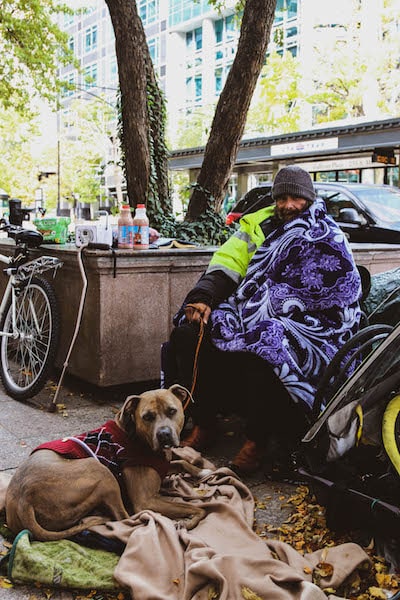
A man is camping on the sidewalk. He says he is only safe thanks to his pitbull. “I have nowhere else to go,” he says. His friend, who attempted to camp in the park, recently froze to death because the sprinklers came on in the middle of the night and he couldn’t dry out.
Less than a block down the street, the 222 Main Street skyrise is home to Goldman Sachs on three floors. Around seven years ago, local businesses on Main Street were hoping to see a big boost in business thanks to the leasing of such a large space to one of Wall Street’s largest investment firms, but the lunch rush that restaurants and bars were receiving prior to Covid has still not returned, and several have shuttered, many are keeping more limited hours.
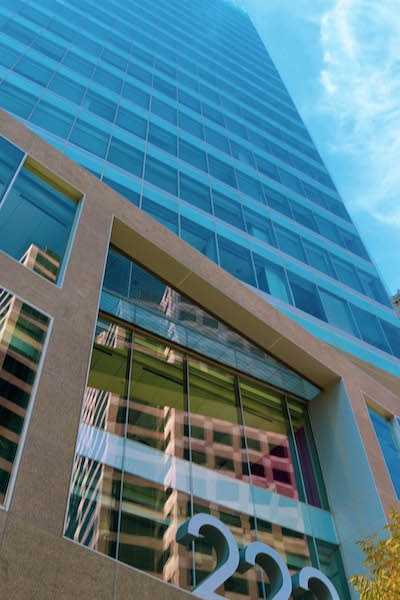
Goldman Sachs employees are lined up at the San Diablo Artisan Churros food truck. An off-duty police officer is on site to provide security. He tells me that since the main homeless shelter was demolished and three new shelters were built, the “homeless situation” has become contained but spread out. But the rumor is that some large downtown firms are planning on leaving for Draper once the old prison is demolished and the new “tech hub” center is open.
This strange contrast between rich and poor ― wealth managers and drug abusers; thousand-dollar custom tailored sport coats along with men in sweats, shoeless, covered in dirt and grime ― all within two city blocks, is apparently the new normal on Salt Lake City’s Main Street.
Main Street Business Owners On the Homeless Situation
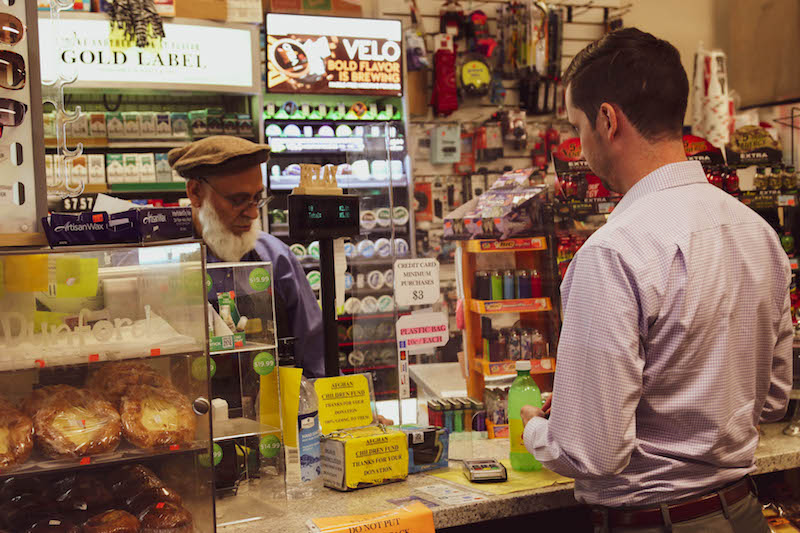
Omar Mullahkhel operates the Market on Main Street convenience store beside where Zion’s Books once resided. He has witnessed massive changes in his 35 years in business on the street since opening. He emigrated from Afghanistan in 1973 and studied Microbiology-Chemistry at BYU. He tells me he has been fortunate enough to buy the property he now resides in, but that currently there is so much homeless activity that his customers tell him they are afraid to come to his shop. He says the city hasn’t shown enough concern over the plight of small businesses due to the encroachment and daytime activities of the homeless.
Omar unfolds a bill from an envelope he recently received ― a “special assessment” ― to pay $1,200 for doing business on Main Street. In the past, under Rocky Anderson, the sidewalk was washed and cleaned one to two times per week by the central business district. Now it is washed and cleaned one to two times per several months. Most of the time, Omar washes and cleans his storefront himself. On either side of his business, homeless people are camping and loitering for the day, but he receives a steady influx of customers, many of whom buy small items to get change to buy tickets for the trax station across the street.
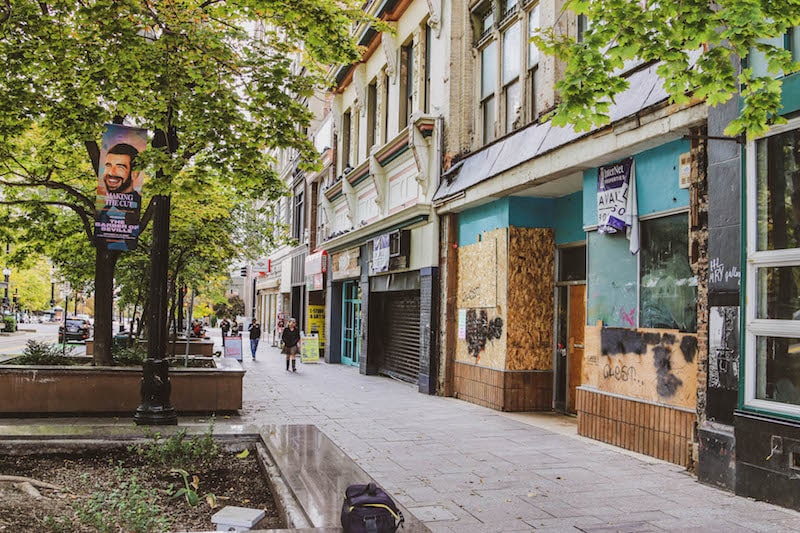
In every major city in the United States, local Main Street businesses have become victims of the rising blight caused by homeless population increases. Prior to 2009, homeless encampments were rarely seen in Salt Lake City. Why are cities across the country allowing public camping at unprecedented levels?
One major reason is that the ACLU has been fighting court battles to ensure that homeless have the “right to live” on public streets, even if it is clearly impacting local businesses. Omar says that since Eborn Books, Coffee Garden, and the Off-Broadway Theater closed, his business and sales have been down. “This is a cursed block,” he tells me, as most businesses around him are now clearly in a state of disrepair or boarded up. Just one restaurant and one bar remain: Pleiku and Keys on Main.
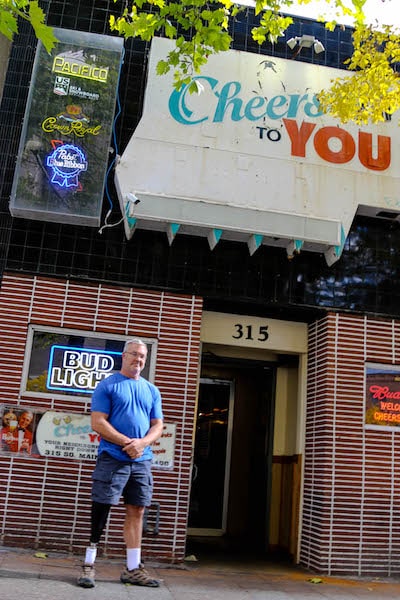
Bob Brown’s Cheers to You bar is located on a much more vibrant section of Main Street. Block 52 is home to 15 bars and restaurants and has become the epicenter of downtown’s nightlife and economic activity ― something that never existed in downtown Salt Lake City until the past decade after the law was changed to allow for more than one bar on each face of a block. But when I arrive to interview Brown at 11am, his next-door neighbor Sergei, the Raman Bar owner, is dealing with a new problem: three large piles of human feces leftover from the homeless the night before.
Brown tells me that the campers stay on Main Street all night and they sometimes relieve themselves in the planters there. But this was the first time he found human excrement right on the sidewalk. He called the City to come clean it so the smell doesn’t impact his lunch rush business.
Brown confides in me that while his block has been doing great business, the city isn’t providing enough support to prevent the homeless from engaging in all sorts of illegal activity while he and his fellow business owners are trying to serve customers. He has offered to pay off-duty police officers to patrol the block during the busy hours, but the SLCPD wouldn’t allow it. Now they are going to allow it, but he needs the support of other business owners on the block to “pitch in.” He believes it would make a big difference to have a constant presence of officers on foot.
But what can be done about the problem long-term? Brown believes that the homeless need somewhere else to go. He likes the idea of a tiny-home village on the west side, but he and his neighbor Sergei share the opinion that customers need to stop succumbing to the pressure of homeless panhandlers. The homeless migrate to the block because they are working to receive donations to buy illicit drugs. The homeless population in Salt Lake City have access to free meals, and many of the homeless on the street are clearly suffering from mental disorders, so why is there no place for these people who clearly are in need of treatment?
The Bigger Picture: Why is this happening?
A series of battles fought by the ACLU and decisions made by the Supreme Court have altered the laws and rationale on a national level. The ripple-effect of these decisions has plagued much larger metropolitan areas like San Francisco and Los Angeles. But now it’s clear that Salt Lake City, which always has had a reputation for being clean and free of the deleterious effects of human depravity, is also suffering the consequences of laws intended to protect the civil liberties of the homeless.
The New York Civil Liberties Union Mental Patients’ Rights Project was working to protect people confined due to mental illness and developmental disabilities. They targeted cities for legal action to prevent long-term housing in places that were once stigmatized as “insane asylums”. These “landmark cases that became the highpoint of the civil rights movement for people with mental disabilities,” According to the ACLU, drastically reduced the number of patients hospitalized for mental disorders.
In Wyatt v. Stickney (1972) and Wyatt v. Aderholt (1974), the ACLU challenged the conditions of hospitalization for those with mental illness and developmental disabilities. These judgments led to significant reductions in the institutions’ populations. The goal was to treat patients on a local level, but the reality has been that many people suffering from mental disorders self-medicate using hard-drugs such as meth, fentanyl, spice and meth. And the new reality is that our homeless shelters, jails and prisons are not equipped to accommodate these people. Those suffering from mental disorders fall through the cracks so they wander the streets in all major cities, protected by the ACLU.
Another recent court battle over camping on public sidewalks in Boise, Idaho has paved the way for how cities need to respond to homeless “encampments”. Per the Ninth Circuit Court of Appeals in Bell v. Boise, public camping can only be banned if a public shelter is available. According to an ACLU legal primer, “It is possible that a city could have enough shelter resources that the homeless population truly has a choice to sleep elsewhere. When reasonable alternatives to outdoor camping exist, enforcement of anti-camping ordinances may not be unconstitutional.”
If Salt Lake City’s homeless shelters are full, it is legally Constitutional for homeless people to camp in public spaces. Salt Lake City has a law on the books against camping in public spaces, and they enforce this ban by handing out vouchers to the homeless population to stay in motel rooms. I’m told that the overfill shelter will soon be in place and that homeless people suffering from mental disorders and freezing at night should be alleviated. But clearly, the larger problems need to be solved before conditions improve for both the homeless and small business owners.
Utah Stories is offering a series of podcasts and a documentary regarding the homeless situation in downtown Salt Lake City. For updates and news, subscribe to Utah Stories’ digital newsletter at UtahStories.com.
